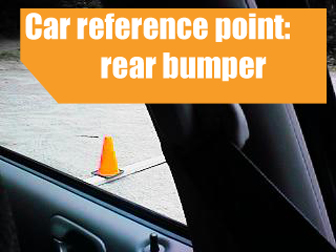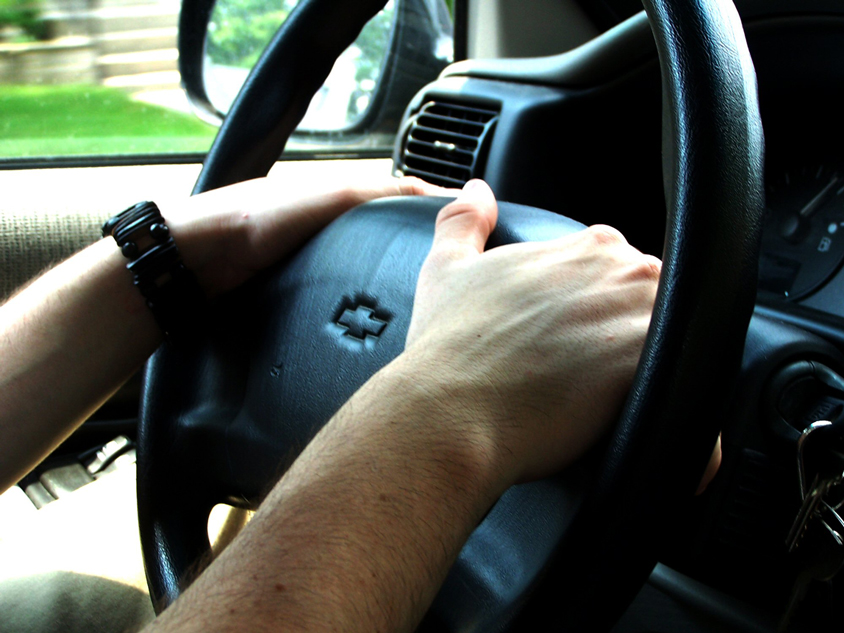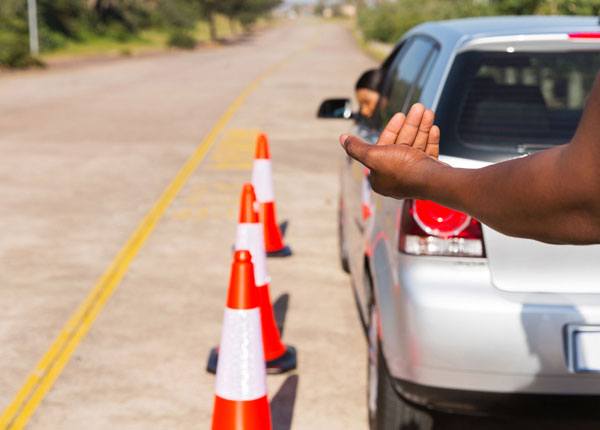

One of your biggest challenges as a new driver will be learning to identify where your vehicle sits in relation to the roadway. Developing this sense is essential, as it will make sure you can correctly position yourself within a lane and avoid colliding with the curb, other vehicles and obstacles. Correctly estimating your vehicle’s location is extremely hard, as your view from the driver’s seat will be impeded by the hood, dashboard and trunk. Reference points are the key to positioning and maneuvering your car accurately. Master these visual guides and challenging maneuvers like parallel parking will soon be a walk in the park.
When learning about car reference points it is important to remember that standard reference points are only ever approximations. Vehicles come in all shapes and sizes and as such, will have slightly different optimal reference points. Your car may be longer, shorter or wider than the vehicle used in these examples. Keep this in mind and adjust your reference points as necessary while practicing driving maneuvers. If the reference points are different, it is likely they will only be slightly off the mark.
Side position reference points are used to locate a vehicle in relation to side-adjacent road markings and obstacles, like the curb or another parked car. These points of reference will help whenever you are trying to park or position yourself within a lane.
Your vehicle’s left headlight makes for an excellent reference point when attempting to park on the left side of the road. Take advantage of this reference point by imagining a line through the point where the left fender meets the hood. This point should line up with adjacent lane markings or the curb when you are three to six inches away, which is the distance you should aim for when parking or assuming lane position two.

To summarize, your left headlight should be used for reference when you need to do any of the following:
When positioning yourself in relation to the right curb, use the center of your hood as a point of reference. This should allow you to maneuver very close to the right curb without hitting it. Generally, when the curb appears to intersect the middle of the hood from your viewpoint in the driver’s seat, your vehicle is in the ideal position, three to six inches away from it.

The center of the hood should be your reference point when trying to:
You must be able to determine how close the front of your vehicle is to a stop line, once the line itself has been obscured by the hood. Drivers must stop as near to the line as possible, without the front bumper or any other part of the vehicle actually going over the line. Your side-view mirrors provide the best reference points to use in this situation. The image shows how a stop line would look in relation to your left side-view mirror, when your vehicle stops just before the line.

Here is how the stop line would look beside your right side-view mirror when the vehicle has stopped just before the line. If you are standing in the right lane, the stop line will not be visible from the right side window.

When it comes to reversing and parallel parking, you must know the rear limit of your vehicle. Looking through your rear-view and side-view mirrors alone will not be enough to position your car correctly. Drivers must look over their left and right shoulders through the side windows to position their vehicle in relation to the curb line when parallel parking.
The image shows the curb line when the vehicle’s rear-end is positioned beside the curb, and the driver is looking over their left shoulder. In this situation, the door handle makes an appropriate reference point.

This image demonstrates what the curb line would look like through the side window, when the vehicle’s rear end is aligned with the curb and the driver is looking over their right shoulder.

If – after reading this article – you are still wondering why so much emphasis is placed on car reference points in the driver’s ed program, consider these final points:

Find out with our free quiz!
Click a star to add your vote
4.7 out of 5 stars based on 12 votes.
Drivers should never underestimate the importance of the pre-drive checklist. Looking behind the vehicle to make sure there are no children and animals there, making sure your seat belt is on, adjusting your seat and mirrors, making sure the windshield is clean - you have to go through all these things every time before you start driving.

Getting to grips with the various possible steering techniques begins with learning to position your hands on the steering wheel appropriately for the immediate driving situation and learning and practicing several different steering methods. These include the “hand to hand” technique (pull-push steering) and the “hand over hand” technique.
 Backing up and Driving in Reverse" />
Backing up and Driving in Reverse" />
Alongside parallel parking, backing up is one of the most dreaded maneuvers in the practical driving exam. Drivers must operate the steering wheel and pedals situated in front of them, while looking back to position the vehicle and check for obstacles. With enough practice it will become just as effortless as driving forward.
T-intersection is a three-way junction where three roads come together. Just like with any other intersection, you must exercise caution when approaching it and you should slow down and watch out for other traffic and pedestrians even if you are traveling on the through road and have the right-of-way.
Driving Through Intersections 7 of 7An interchange is the intersection of two highways at different levels with separate connecting roads for the transfer of traffic from one highway to the other through a series of ramps. The connecting ramps allow drivers to leave on road and enter another safely, without impeding the flow of traffic.
Before You Start Driving 1 of 10When it comes to practical driving maneuvers like steering, backing-up and signaling, the bulk of your learning will be carried out behind-the-wheel; there can be no substitute for actually getting out there and putting these skills into practice. However, getting to grips with essential driving maneuvers does require an academic approach, before you hop into the driver’s seat.
Before You Start Driving 2 of 10When it comes to positioning your car, steering, backing up and communicating with other road users, there is a right way and a wrong way to go about things. It is important to learn the correct maneuvering rules and methods from the start of your learning journey, otherwise you may develop bad habits which are hard to fix later.
Before You Start Driving 3 of 10It may surprise you to find out that lane positioning is not just a concern for motorcyclists and cyclists. Car drivers must also learn how to position themselves within a lane appropriately. It is not simply a matter of remaining centered in your lane or as many drivers assume, keeping to the right. Different driving situations demand different lane positions.
Before You Start Driving 4 of 10Learning to manage the space around your vehicle effectively will help to improve safety and limit the chances of a collision occurring. The area immediately around your vehicle is referred to as the “vehicle operating space”. This space consists of seven “zones”, each of which is as wide as a lane and extends as far as the driver can see in that direction.